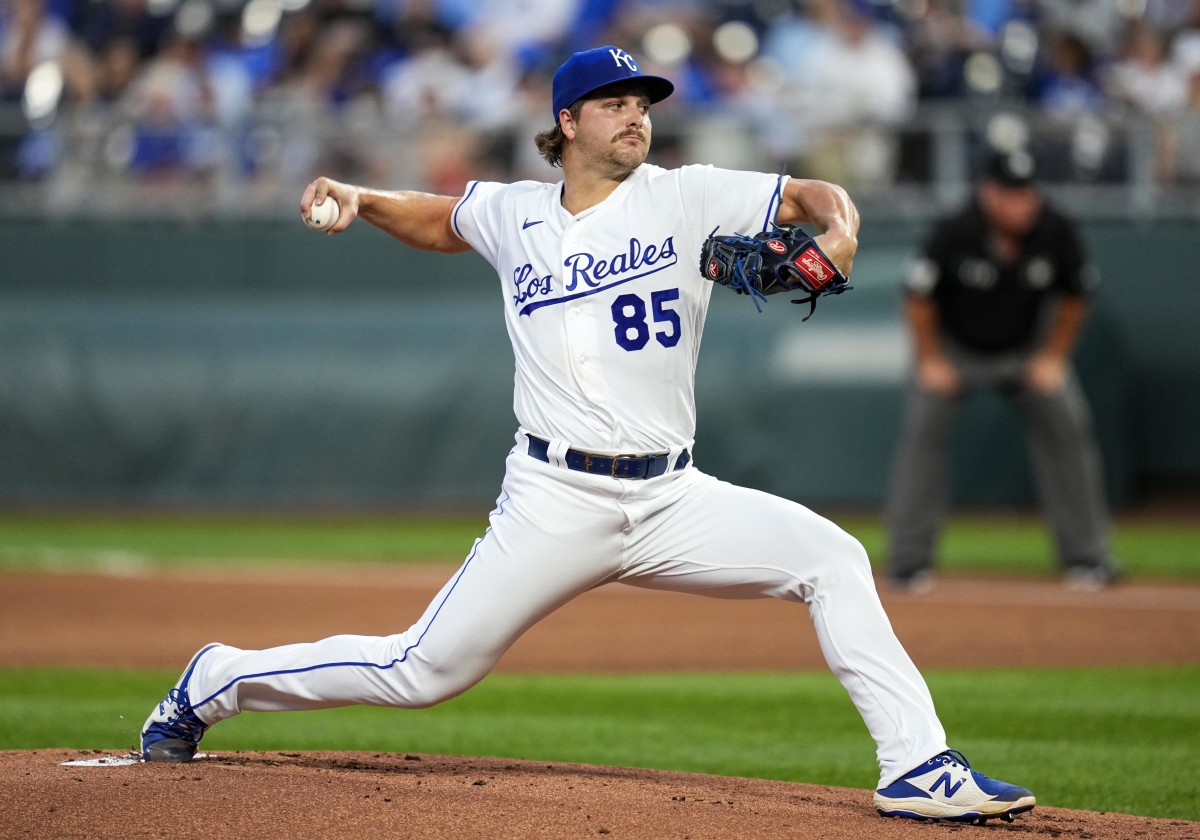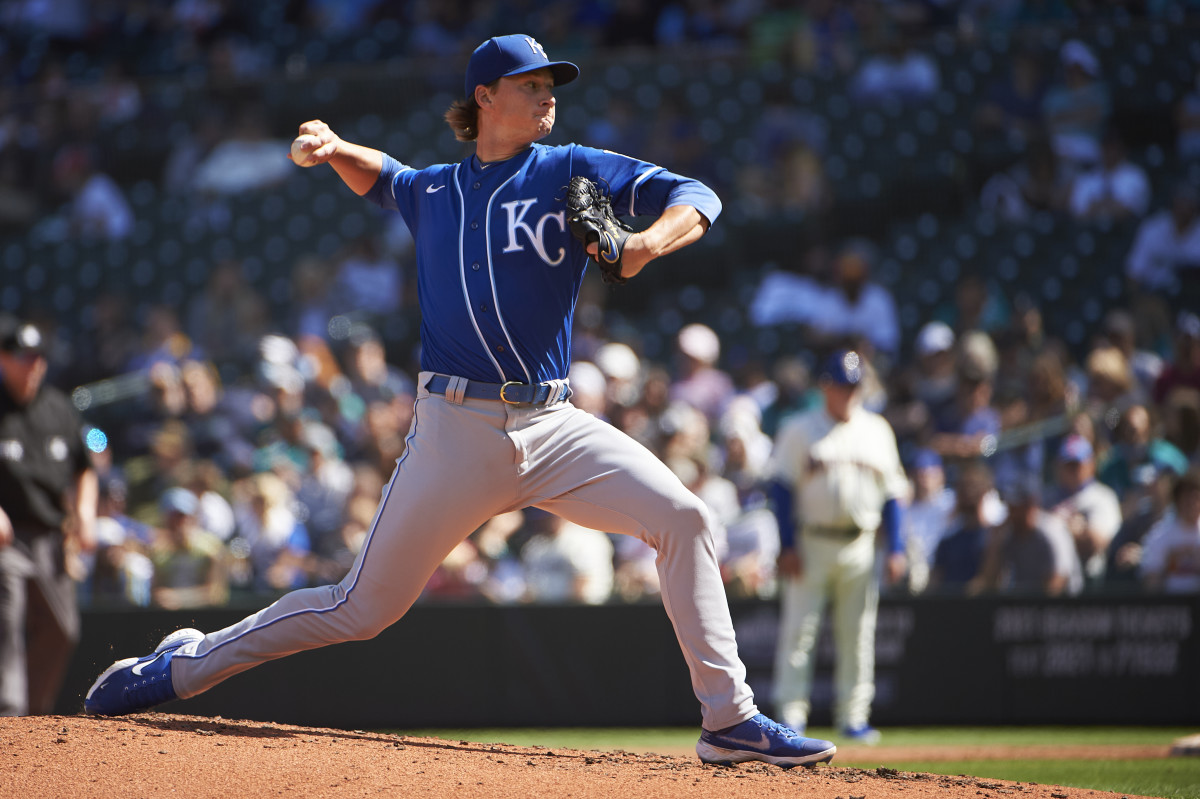The Royals Have Too Many Pitchers — It’s Time to Trade
The Kansas City Royals have spent the last four years stocking up on arm talent through the draft. From Brady Singer to Frank Mozzicato, the Royals drafted 66 pitchers from 2018 to 2021. That’s including a 2020 draft that featured only six rounds.
The results were exactly what the Royals wanted: a minor league system full of talented arms who are on the verge of contributing at the major league level. Of the Royals' top 30 prospects, 14 are pitchers and 10 are expected to be MLB-ready within the next two seasons:
Top 15: Asa Lacy (No. 4, 2023 projected debut year), Mozzicato (8, 2025), Jonathan Heasley (9, 2022), Ben Kudrna (11, 2025), Alec Marsh (13, 2022), Angel Zerpa (14, 2022)
Next 15: Ben Hernandez (16, 2024), Anthony Veneziano (18, 2023), Austin Cox (19, 2022), Will Klein (20, 2023), Dylan Coleman (23, 2022), Noah Murdock (25, 2023), Shane Panzini (27, 2025), Drew Parrish (30, 2022)

This doesn’t include the first four of the 2018 draft class in Singer, Daniel Lynch, Kris Bubic and Jackson Kowar. All four are 25 years old or younger, have made their major league debuts and are expected to contribute to the big-league club in some capacity in 2022. Throw in 23-year-old Carlos Hernandez and 26-year-old Brad Keller, and Kansas City has a plethora of young, talented arms ready to go prove their potential.
Brad Stellar.@brad_keller13 // #TogetherRoyal pic.twitter.com/GgBRBWFeJX
— Kansas City Royals (@Royals) April 9, 2022
Dayton Moore, J.J. Picollo and everyone else in the Royals organization are trying to determine who has the best chance of succeeding in the majors. It’s why the team saw five pitchers from the same draft class all make a start in 2021. The Royals are throwing as many darts as they can and hoping one or two sticks to the board.
The Royals have preached that they want to compete now and have flashed recognizable names across its transaction page to make it appear that’s exactly what they are doing. Whether it’s signing Zack Greinke and Carlos Santana or trading for Amir Garrett and Andrew Benintendi, the Royals — on the surface — appear to be trying to be competitive. They are not doing all they can, though.
If we know not every pitching prospect will work out and if we know the Royals have deficiencies in other positions, why hasn’t the organization traded any of these players over the past two years? Nothing is more valuable than a pitching prospect. Executives salivate over what a pitcher could become, and the Royals' lack of a track record with developing pitchers suggests that most will not reach their potential. The Royals could get major league talent in return — or at least they could have.
The early results from Singer, Kowar, Lynch and Bubic have not been overly encouraging. In 478 innings, those four have a combined era of 5.35. Yikes! Imagine had the Royals used one or two of that group in 2021 to go out and get a Starling Marte or Robbie Ray or anyone else on the trade block. Maybe then the optimism heading into last year would have been met.

Instead, Royals fans were greeted with several long losing streaks due to a young rotation's inability to succeed. Now those guys have severely less trade value while the organization hopes it "clicks" for two or three of them. Sure, a team might take a flyer on a guy like Singer due to his stuff, but it will not bring back nearly the return it could have following the 2020 or 2021 season.
The Royals appear to be heading down the same path in 2022. Greinke and Keller will be No. 1 and No. 2 all season followed by a slew of young starters who still haven’t found their footing in the big leagues. And if they fail, Heasley, Marsh, Zerpa, and co. get an opportunity to see if they can do better. That’s just too many uncertainties in the rotation. If the Royals are serious about competing, go get proven guys. Frankie Montas is sitting there in Oakland. Luis Castillo is in Cincinnati.
The Royals offensively, are what they are. There aren’t too many open positions and they have guys in MJ Melendez and Nick Pratto in the minors who will help out. They need to improve the weakest part of the team: the rotation. In the Royals' initial plans, two or three guys from 2018 would have broken out by now. There’s still time for it to happen, but that’s not the case right now. Don’t make the same mistake with the upcoming crop of pitchers.
The last 9 Royals pitchers to allow at least 5 runs in an appearance, either as a starter or a reliever (including today):
— Kurtis Seaboldt 🎤 (@KSeaboldt) April 11, 2022
Jackson Kowar
Kris Bubic
Jackson Kowar
Jackson Kowar
Jackson Kowar
Carlos Hernandez
Jackson Kowar
Brady Singer
Jackson Kowar
It's okay to part with Heasley, Marsh or even Lacy if the price is right. Organizations are too scared of trading away what they could have had instead of gaining what they don’t have.
If the Royals trade Lacy for a big name and Lacy becomes a star while the Royals remain in purgatory, that would obviously not be ideal. But would it be worse than hanging on to Lacy and him being good while the team around him is bad? You have to take chances as a small-market organization, and the Royals have masked their inability to take risks as being the happy-go-lucky, loyal-to-a-fault organization.
When the Royals went all-in in 2015, they traded five pithing prospects for Ben Zobrist and Johnny Cueto. One, Sean Manea, has had a respectable major league career. It's just another indicator that developing pitchers is very difficult and just because you have a lot, does not mean they will all succeed.
The Royals cannot afford to become hoarders if they want to compete in the near future. Instead of throwing as many darts as they can at a dart board 100 feet away, trade a few darts in order to move closer to the board.
